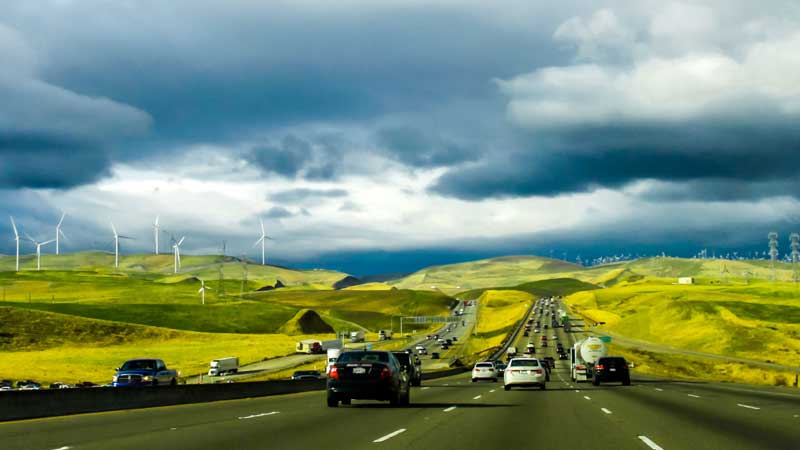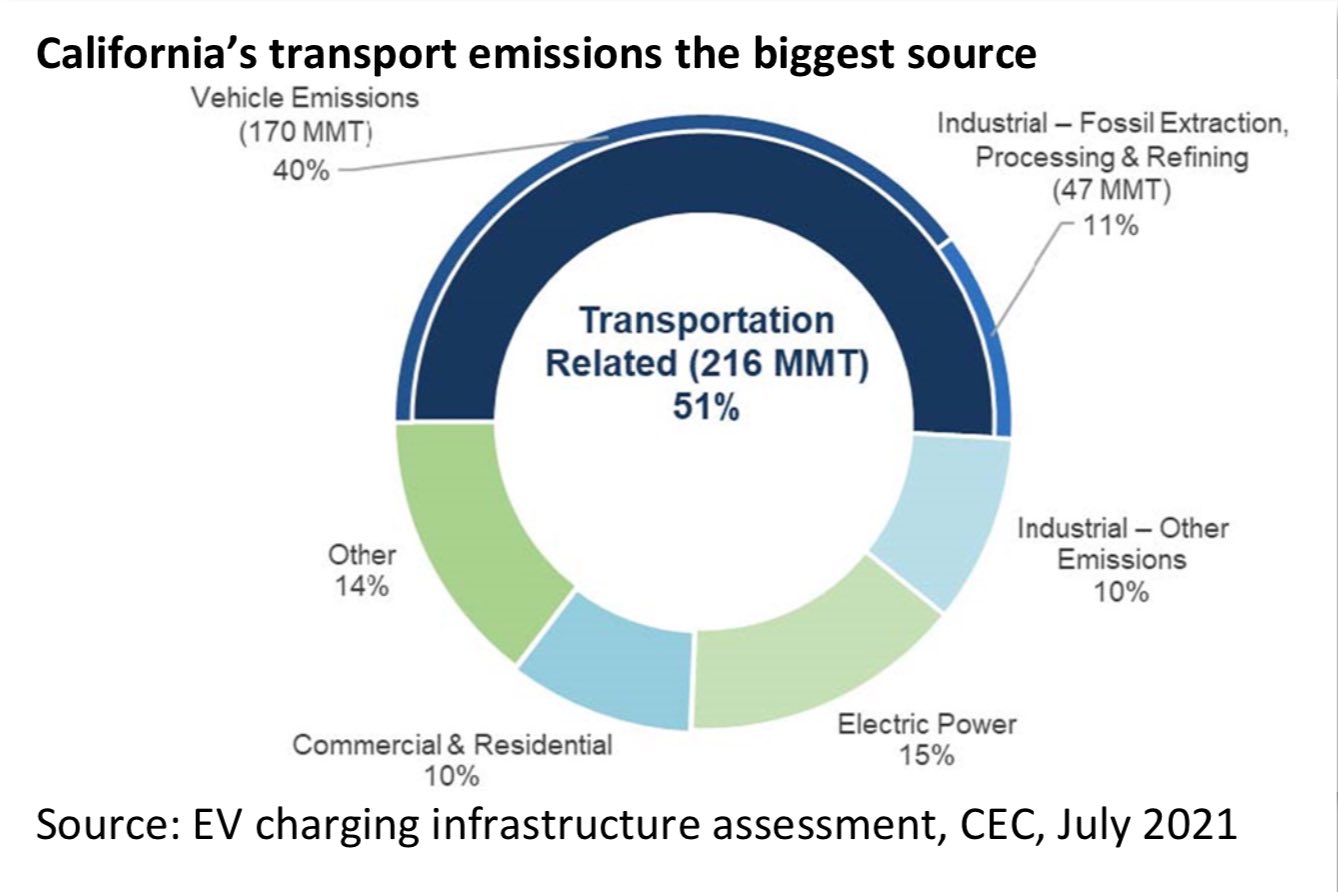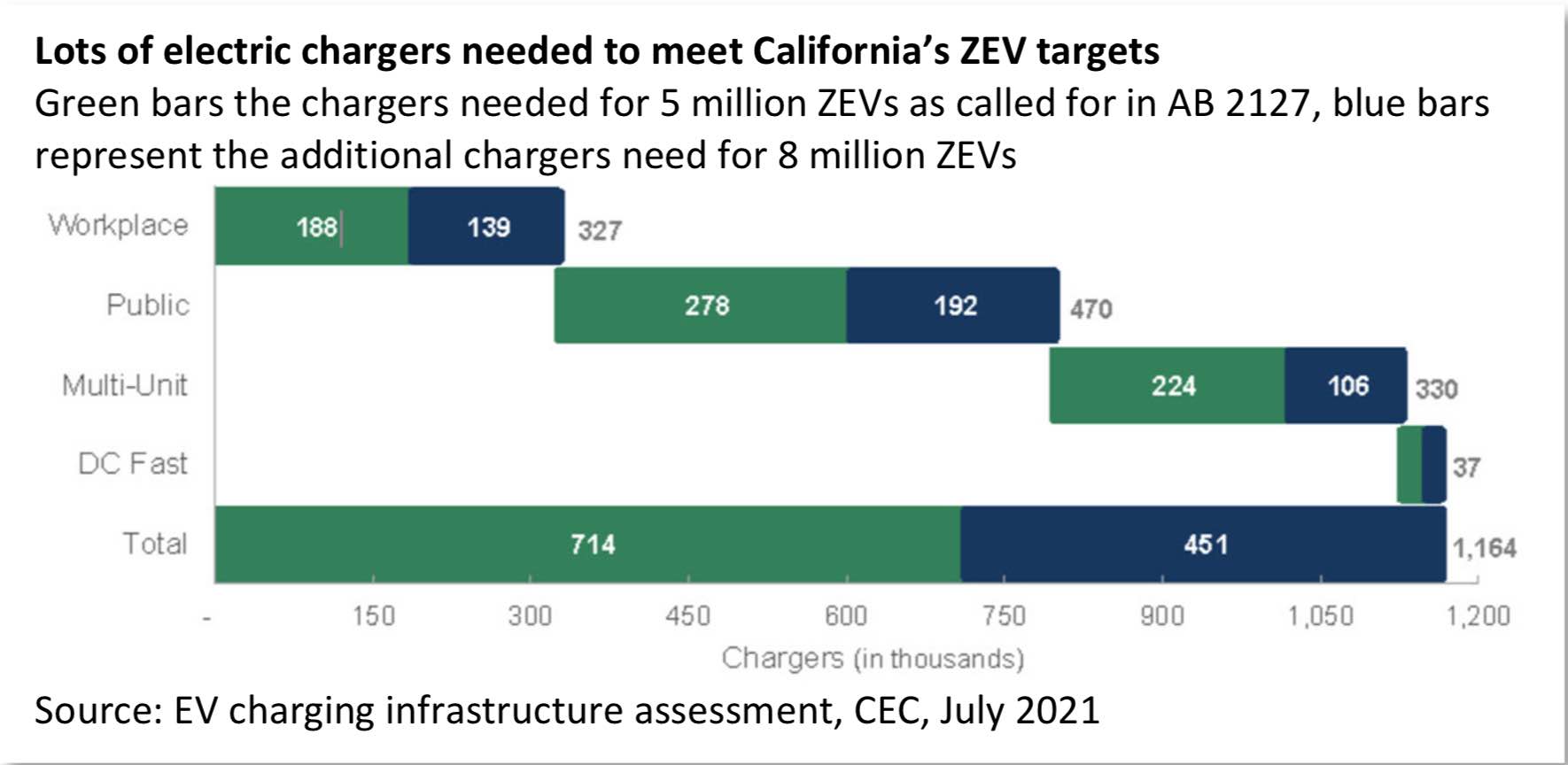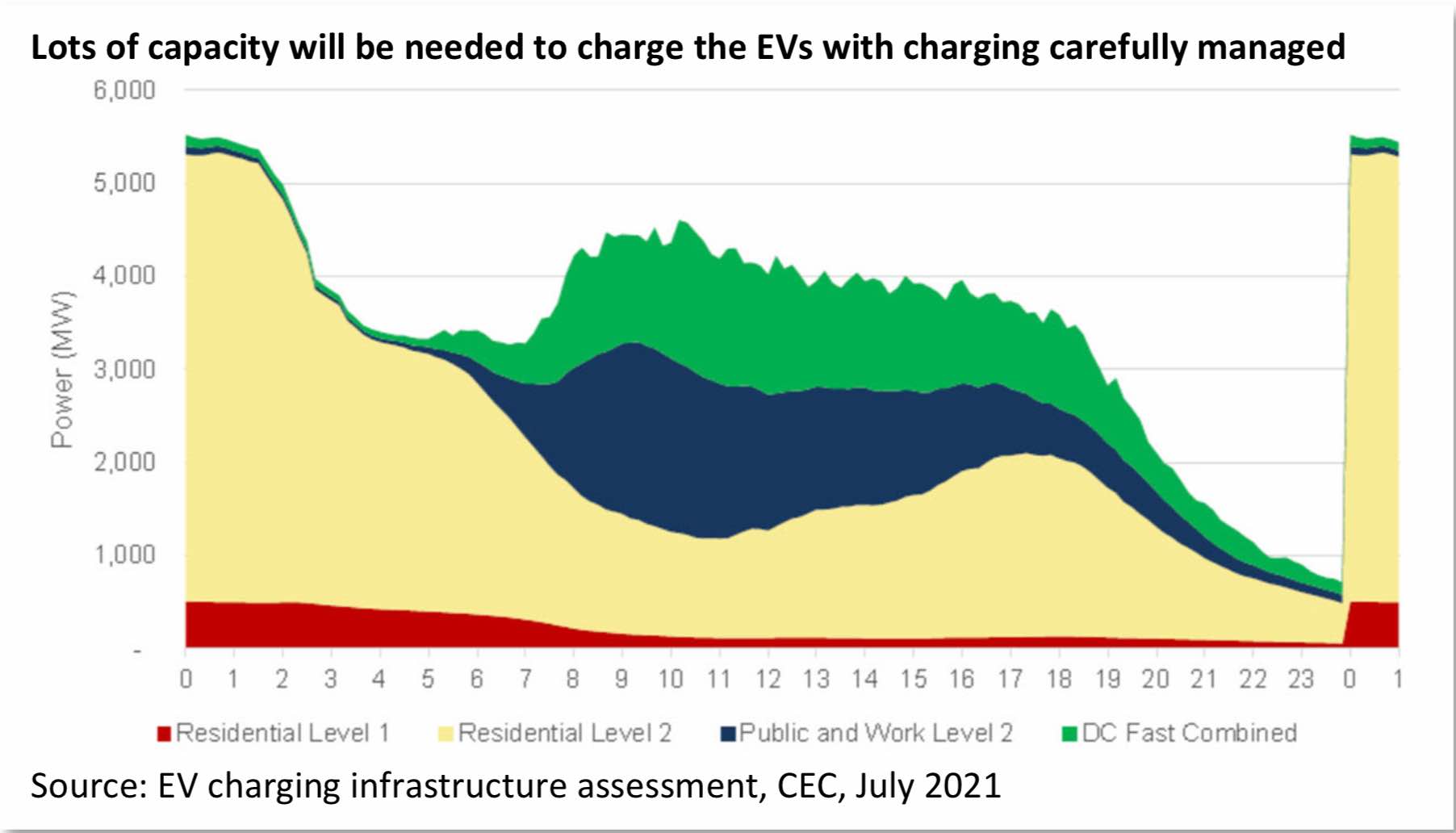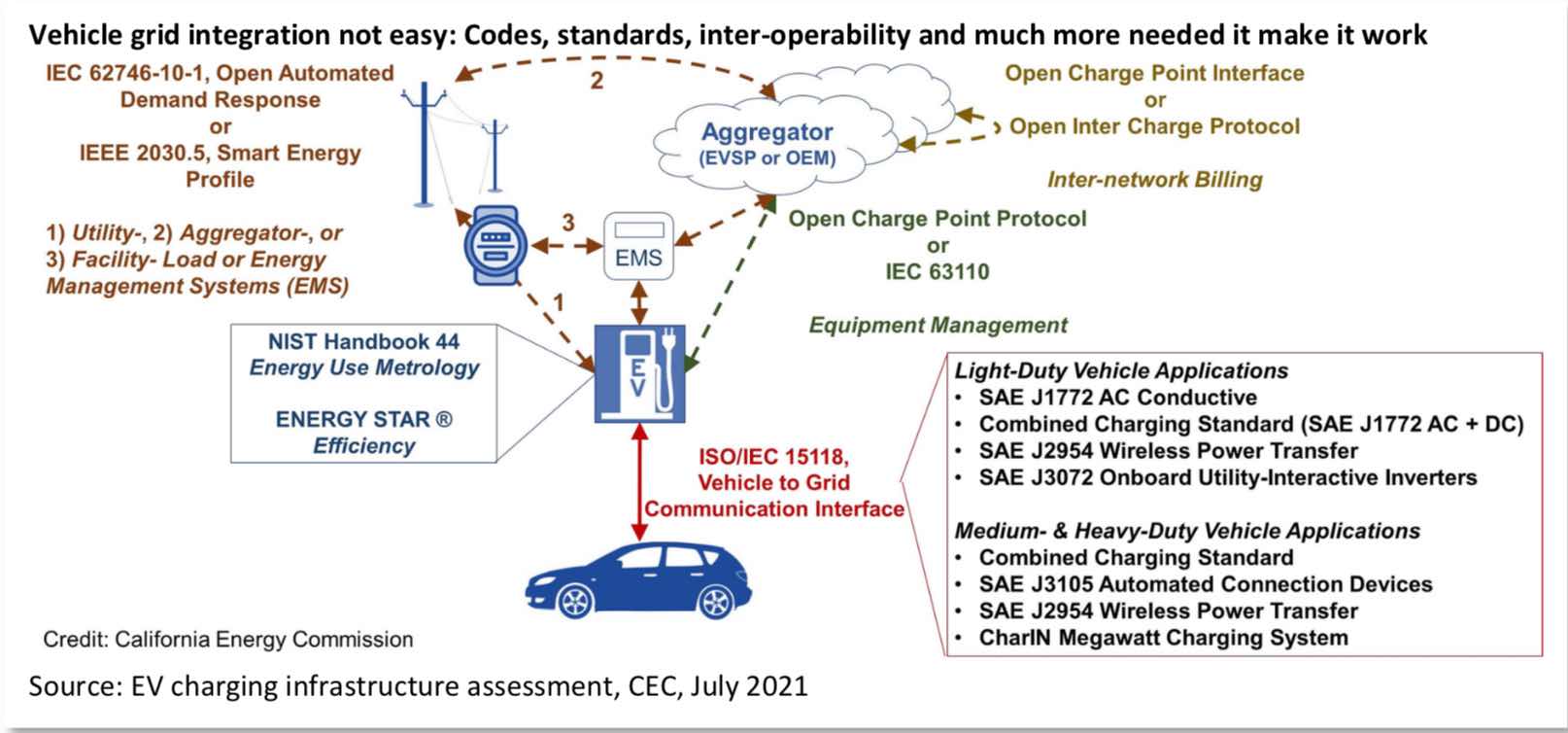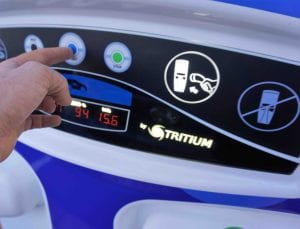President Biden is not the only one obsessed with ambitious electric transportation targets. In September 2020 California Governor Gavin Newsom signed an executive order setting the following targets for zero emission vehicles (ZEVs) for the largest US car market.
It mandates 100% ZEV sales for new passenger vehicles by 2035 and the same for medium- and heavy-duty vehicles, where feasible, by 2045.
With transportation sector accounting for more than 50% of the state’s greenhouse gas (GHG) emissions (visual on next page), more than 80% of smog-forming NOx pollution, and 95% of toxic diesel particulate matter, the transition to ZEVs is a critical step towards the state’s goal of achieving carbon neutrality by 2045.
While the numbers vary depending on who you ask, the aim is to build sufficient charging infrastructure for a least 5 million ZEVs, which will reduce GHG emissions to 40% below 1990 levels by 2030.
Analysis by the California Air Resources Board (CARB), however, estimates that 8 million light-duty ZEVs and 180,000 medium- and heavy-duty ZEVs will be needed by 2030 to meet the goal.
A report recently released by the California Energy Commission (CEC) projects that over 700,000 EV chargers will be needed to support 5 million ZEVs and nearly 1.2 million public and private chargers for 8 million ZEVs in 2030
. Currently, California has 862,874 ZEVs; more than 60% are battery-electric vehicles (BEVs), 38% plug-in hybrid vehicles (PHEVs) and roughly 1% are hydrogen fuel cell electric vehicles (FCEVs).
Bloomberg New Energy Finance (BNEF) and others say BEVs may achieve purchase cost parity with internal combustion engines (ICEs) as early as 2022.
The state already has more than 70,000 public and private chargers with an additional 123,000 planned to bring the total to 193,000.
To meet the 2025 goal of 250,000 public and shared chargers, the state will need about 57,000 more than are already installed or planned as shown in accompanying graph.
Once sufficient numbers of chargers are installed, one must address the issue of where the juice to charge the ZEVs will come from and how the grid will be able to cope with the additional load.
Charging millions of ZEVs will add significant new load into the existing electric grid – which can barely meet the current demand.
CEC projects that electricity consumption in 2030 from light-duty vehicle charging may be as high as 5,500 MW around midnight and 4,600 MW around 10 am on a typical weekday – that is a 20 to 25% increasing in electricity demand at those times, respectively, as shown on the accompanying visual.
Clearly how many of the ZEVs are charged at a given time matters. CEC’s analysis indicates that nonresidential charging demand will generally align with daytime solar generation – yet more than 60% of total charging energy will still be demanded when sunshine is not abundantly available.
Further, a projected surge of charging demand around midnight when off-peak electricity rates take effect may strain local distribution infrastructure, the CEC report says,
“To fully realize the economic, air quality, and climate benefits of electrification, California must pursue greater vehicle-grid integration, the coordination of charging with grid needs, to ensure that charging is better aligned with clean, renewable electricity without sacrificing driver convenience.”
This is easier said than done – which explains the efforts and investments into common standards, inter- operability and a host of other technical issues that remain mostly unresolved and uncoordinated as various EV manufacturers and vendors of charging gear jokey to position their preferred technologies, protocols and standards.
According to Noel Crisostomo, an Air Pollution Specialist at the CEC, much work needs to be done if California is to end up with a charging network that is able to support 8 million EVs by 2030 without crashing its fragile grid.
This summer and next, the California’s Independent System Operator or CAISO is barely able to keep the lights on during extreme heat conditions amidst an unprecedented drought. The capacity shortfall for 2022 is projected around 5 GW.
But then what is the alternative? More ICE cars spewing more carbon into the atmosphere?
Fereidoon Sioshansi is editor of EEnergy Informer. Republished with permission of the author.

